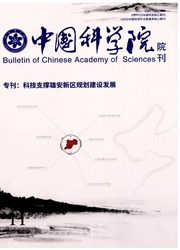

 中文摘要:
中文摘要:
优化我国城镇化空间布局是推进健康城镇化、加快生态文明建设的重要举措。从有助于实现以人为本、全面协调、可持续、富有竞争力城镇化的基本要求出发,把加大垂直海岸线贯穿沿海内陆地带开发轴带建设力度作为完善城镇化主体骨架的重点,把形成多种具有区域特色的城镇化途径作为完善城镇化发展模式的重点,把探索我国适宜区域推进半城镇化进程作为完善城镇化空间形态的重点,通过健全规划体系、合理配置政府可调控资源、完善区域政策,培育东部大都市连绵区(带),引领我国全球竞争力的提升;打造海岸新城镇集聚带,构筑东部沿海新增长极;合理布局内陆城镇群,促进优势集聚过程中的区域间协调发展;稳步推进传统农区城镇化,形成与农业现代化和工业化协同发展的态势;探索山地丘陵城镇化路径,推动老少边穷区域和重点生态功能区域小康社会与现代化建设步伐;搞好沿边城镇建设,打造民生富裕和边疆稳定的国门新面貌。到2030年,形成城镇人口分布与资源环境相均衡、城镇化经济社会生态效益相统一的城镇化空间布局。
 英文摘要:
英文摘要:
It is a very important measure to realize a healthy urbanization and construct an ecological civiliza- tion through optimization on the spatial pattern of urbanization. In order to achieving a people-oriented, com- prehensive, coordinated and sustainable, comparative urbanization, the construction of development belt of ver- tical coastline throughout the coastal islands should be enhanced. Meanwhile, the urbanization mode that formed by multiple regional characteristics should also be concerned and set as one of the focuses of optimiza- tion on the spatial pattern of urbanization. Furthermore, the exploration of suitable way for accelerating region- al semi-urbanization is another important issue for improving the urbanization mode. The global competitive- ness of China could be enhanced through improving the planning system and regional policies, rational alloca- tion of government resources, and cultivation of eastern megalopolis areas (or strip). With respect to the advan- tage accumulation during regional development, the regional distribution of inland group of towns should be seriously concerned and intervened for achieving regional coordinated development. Regarding to the special situation in China, the urbanization process should be reasonably promoted through collaborative development of industrialization and agricultural modernization, and meanwhile, exploration of suitable urbanization modes for different areas, such as hilly landscape areas, undeveloped areas, and key ecological functional zones Through practice the key strategies above, the spatial pattern of urbanization in China would be achieved till the year 2030 that can coordinate the urban population distribution with natural environment and resources, coordinate the social economic output with ecological benefits
 同期刊论文项目
同期刊论文项目
 同项目期刊论文
同项目期刊论文
 Major Function Oriented Zone: New method of spatial regulation for reshaping regional development pa
Major Function Oriented Zone: New method of spatial regulation for reshaping regional development pa 期刊信息
期刊信息
